Today more than ever before, it is difficult to underestimate the value of customer brand equity. It is what separates a generic local soft drink in your supermarket to Coca-Cola and Pepsi. It’s the value that a brand adds to comparable products.
Customer brand equity (also referred to as Customer-Based Brand Equity, or CBBE) relates to how your customers’ attitudes towards your brand influence the success of your business overall. If customers recognize, understand and connect with your brand, performance goes up (provided experiences are positive).
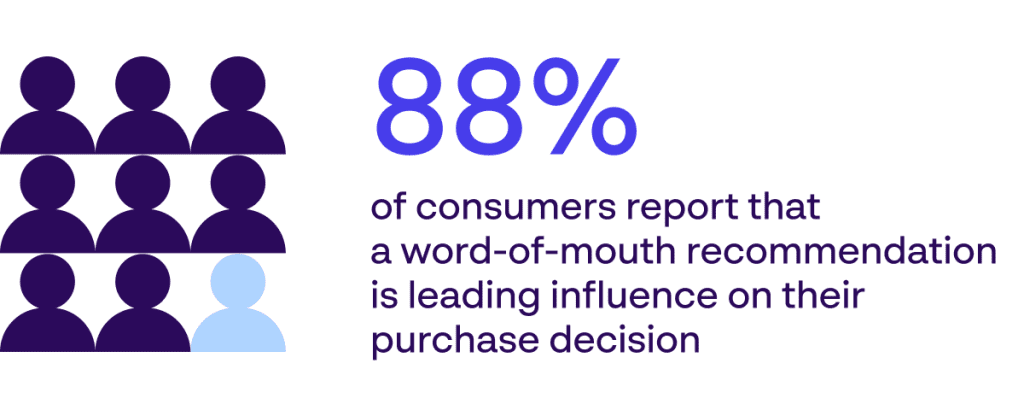
It appears a straightforward concept to understand, but building customer-based brand equity isn’t anywhere near as clear-cut. It takes a lot of effort and nurturing your audience, but the rewards for getting it right can make a big difference to your business prospects.
Plus, measuring CBBE can offer valuable insights into your company’s performance and play a key role in guiding your marketing strategy.
Here, we dive deeper into customer brand equity and why it’s so valuable for companies to strive towards. This includes a breakdown of Keller’s brand equity model, and techniques you can apply to enhance your brand equity moving forward.
What is customer brand equity?
As noted earlier, customer brand equity represents how much the success of your brand is directly related to the attitudes of your customers towards it.
It’s no shock that loyal customers play a vital role in the success of any brand or organization – without them, it would be impossible for these to get anywhere. But their influence extends far beyond simply how much they’re buying into your products or services – it is as much about how they perceive your brand.
If customers have a positive association with your brand and use it regularly over your competitors, this will naturally have a positive effect on your business. Conversely, an overall negative perception of your brand – or if you remain unknown and not even on customers’ radar, this will have the opposite effect.
Today, people can publicly review and critique a brand’s quality of products and service within seconds. Paying attention to the strength of your customer brand equity is as crucial as ever.
In essence, customer brand equity plays a vital role in depicting brand loyalty towards your business. As acquiring a new customer is 5 times as expensive as maintaining an existing one, having a strong CBBE is likely to benefit your bottom line.
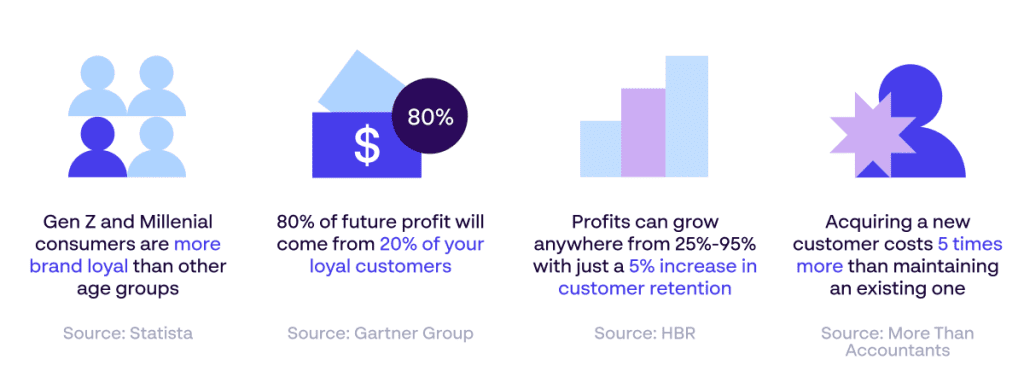
Plus, having loyal customers that understand and resonate with your brand will help generate new leads more naturally. Brand-loyal consumers are more likely to act as advocates for your services to loved ones and friends – especially valuable considering 90% of consumers claim a word-of-mouth recommendation is a leading influence on their purchase decisions.
This makes the value of your customer-based brand equity essential to the strength of your company as a whole. If this is managed well and harnessed effectively, you can make a big impression on how successful your business is operating.
Equally, an understanding of your customer brand equity can provide insight if your brand is not connecting with consumers in the way you anticipated. Identifying this can encourage a change in strategy or approaches that develop a stronger, more positive association between your target audience and your brand, leading to repeat business and loyal advocates.
Brand equity vs customer equity
Brand equity illustrates the worth of the brand, i.e. the value added to a product by branding it. Customer equity relates to lifetime values that are important to consumers.
Both are linked by a strong focus on customer loyalty, and the value of having a dedicated customer base in determining the overall worth of a brand. But, what makes customer brand equity a key focus is its direct connection to the financial impact customers have on an organisation as a whole.
Therefore, building customer-based brand equity achieves the critical aims of raising the value of your brand, while also giving insight into what your customers want and expect from your company.
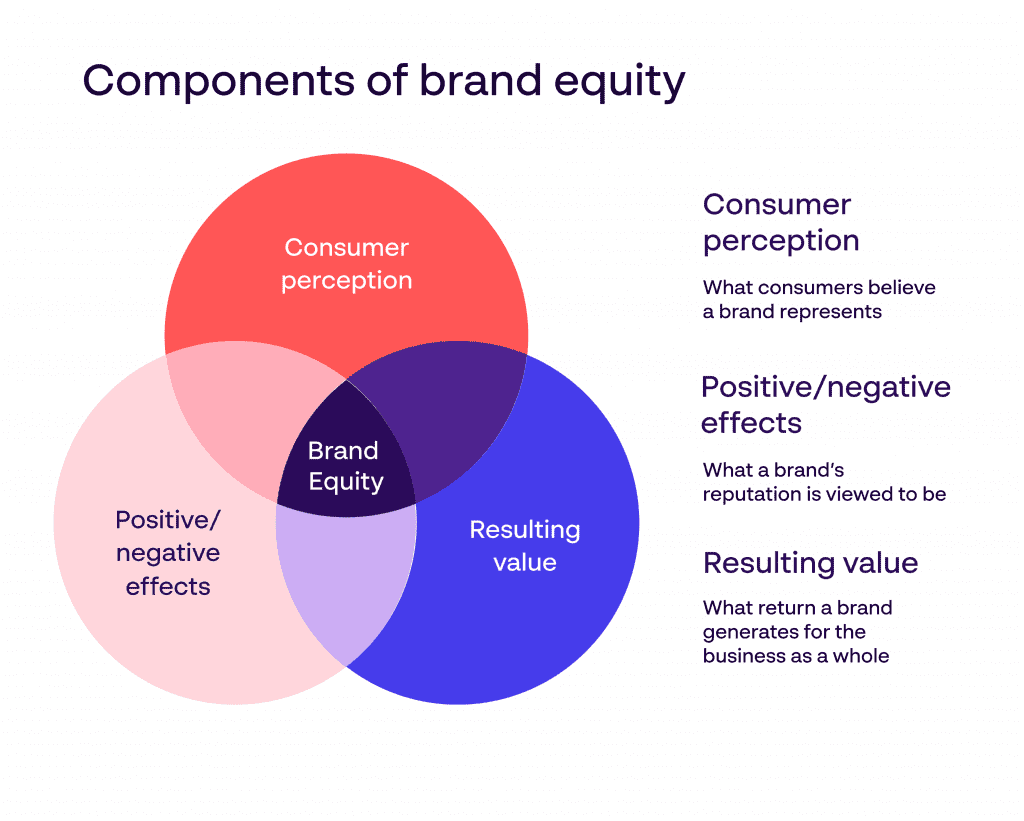
The Keller Brand Equity Model
The standout CBBE model was developed by Kevin Lane Keller, a Professor of Marketing, in his 1993 book Strategic Brand Management. Through this model, Keller looked to illustrate the journey of customers’ relationships with brands – from recognition at the bottom, through to resonating with the brand at the peak.
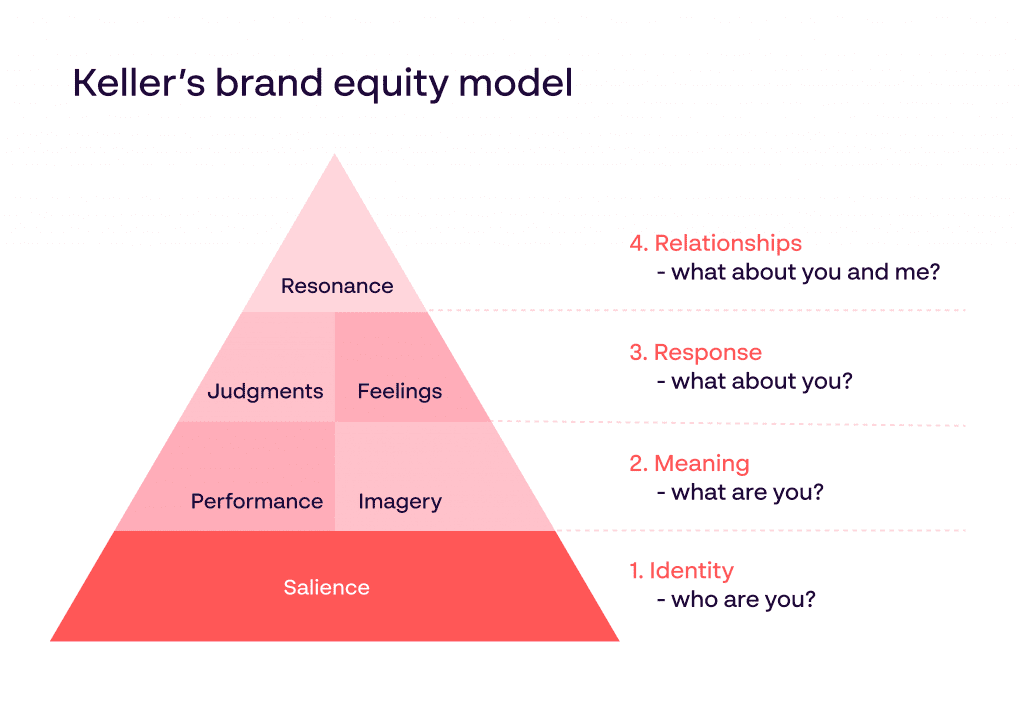
As depicted in the above image, Keller identifies 6 components that contribute to customer brand equity, and thus how customers think and feel about a brand overall:
- Salience
- Performance
- Imagery
- Judgements
- Feelings
- Resonance
Here, we’ll cover these in greater detail and the role each plays in creating customer loyalty towards a brand.
Who are you?

At the foundation of the brand equity pyramid is salience, which represents how aware people are to the existence of your brand in general. This is the essential first step in building customer brand equity – if people don’t know about your brand, it will be hard for them to form an opinion about it one way or the other. This section carries the weight of the rest of the pyramid.
Of course, this stage is about more than ensuring people have some recognition of your brand; it must be the right recognition. At this first instance, it’s important you give people a clear, consistent and accurate depiction of your brand’s identity, as without this they will have little chance of progressing further up the pyramid.
To make the biggest positive impact on your customer brand equity at this level, you should conduct thorough research to get a clear understanding of your target audience, and what they are looking for out of a company that provides your products or services. How do they decide between your brand and another competitor?
Once you have established this, it is important that your awareness efforts:
- Hone in on the pain points/interests that matter to them
- Are placed on a platform that they interact with often
- Are consistent across all channels you choose to market o
What does brand salience mean for your marketing team?
The people inside your organization must live the brand first, in order to help your audience recognize, trust and remember it. A brand portal becomes essential, acting as a single source of truth.
A well-structured showcasing of your brand identity includes ready-made campaign assets, tone of voice guidelines, or any content creation templates they can use. Everyone can visualize and represent the brand – employee, partner or stakeholder – with 100% brand consistency from day one.
What are you?

The second level of Keller’s CBBE model is divided into two segments – performance and imagery. Performance covers the actual features and capabilities of your products/services. This encapsulates:
- Functionality
- Reliability
- Style/Design
- Price
- Durability
- Customer Service
- Customer Satisfaction
Consequently, if your product delivers on the promises highlighted in your brand awareness campaigns, then it should lead to positive experiences which, in turn, drive customers further up the brand equity pyramid. If it doesn’t deliver on their expectations, then you risk them falling away altogether.
This is why authenticity is more than just a buzzword when it comes to customer-based brand equity – it is central to encouraging loyalty and establishing long-term relationships.

Alongside performance is imagery, which is more about how your brand meets your customers’ social and psychological needs. Think of your brand as if it were a human – what would they be like? Is it strong and tough? Is it sensible and sophisticated? Is it quirky and exciting?
Brand imagery is what people think when they see your brand. It is about how happy they would be to be seen associated with your products as a result of its reputation.
How effective this proves for you will come from initially discussing your brand values and which you consider relate to the interests of your customers. How important is the environment for them? Do they care about their local community? Finding the answers to these and other questions will help you project an image customers can get on board with.
How can your marketing team show customers your brand meaning and brand features?
Ensuring every visual, message and asset reflects who you are as a brand – consistently and without compromise – requires fast and reliable access to the right materials, tailored to their roles and regions.
A Digital Asset Management (DAM) system is key to making this possible. It centralizes all approved assets in one place, making it easy to locate, share, and use brand materials that align with your identity and values. When your DAM reflects your brand’s meaning with structure and clarity, your teams are empowered to deliver content that will resonate with audiences and is the starting point to evoking an emotional response.

What about you?

The third strand of the customer-based brand equity pyramid is also split in two, covering both judgement and feelings. These both relate to what people feel towards your brand, and the impact this has either positively or negatively.
First, judgement is about the opinions that people form about your brand. This could be good, like if someone considers your products reliable or handy. Or it could be detrimental, as in somebody judging them to be cheap or ineffective. And while you might disagree with their assessment, they still carry a great deal of weight.
Typically, the judgement of a brand breaks down into four segments:
- Quality – the brand’s actual/perceived quality
- Credibility – the brand’s reputation
- Consideration – the brand’s relevancy
- Superiority – the brand’s status against competitors
Plus, someone doesn’t have to even experience your brand first-hand to be affected by judgements – they can form an opinion simply through word-of-mouth.
To combat the potential problems of negative judgements, it’s essential your company is responsive to any complaints or issues that customers may have. Having access to software that can quickly turn around relevant marketing materials is extremely helpful in these circumstances.
Also, if these persist, it gives you just cause to reassess your brand and if it is delivering as it should be.
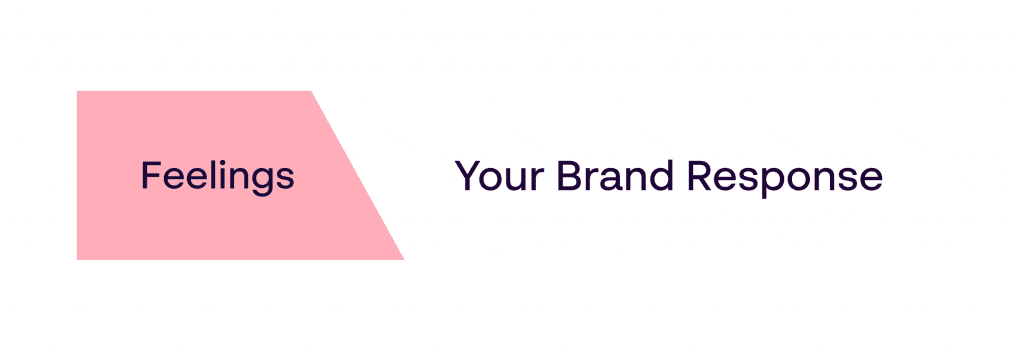
The other half of this equation is feelings, which unsurprisingly covers how people feel about your brand. According to Keller’s brand equity model, there are 6 positive brand feelings that companies should be aspiring to:
- Warmth
- Fun
- Excitement
- Security
- Social approval
- Self-respect
While your brand might not appeal to all the emotions listed here, it should focus on at least one and make sure customers feel that when they interact with or consider your brand.
Associating your brand with positive feelings and judgements is crucial for building customer-based brand equity – it grows trust and helps form a strong, lasting relationship between your company and your customers.
Remember – eliminating negative feelings and judgements is a tall ask once they’ve planted roots, so trying to instil positivity from the outset is very beneficial.
How can marketing teams quickly respond to affect how your brand is perceived?
Perception can shift in moments. Reacting to a crisis, capitalizing on a trend or addressing customer sentiment – the ability to act fast is non-negotiable.
When perception is shaped by how fast and authentically you show up, having the tools to act with clarity and control gives your brand a critical edge, such as flexible design templates. You need your frontline teams to create marketing content that can be localized, while fully on-brand in look and feel, with your brand’s tone and values in tact – reinforcing credibility and trust in real time.

What about you and me?

Finally, we reach the ‘Holy Grail’ of customer brand equity – resonance. This is the stage where customers are more than just aware of your brand and buying what you’re selling – they are advocates for your brand. These are the customers who go out on your behalf to introduce others to your company.
It is unquestionably the most difficult level to reach, but it comes with the greatest benefits. In Keller’s model, he breaks resonance down into 4 categories:
- Behavioural loyalty – how habitually a customer buys from your brand
- Attitudinal attachment – the love and connection people feel towards your brand
- Sense of community – the bond that customers feel towards others who use your brand
- Active engagement – how engaged people are with your brand even when not purchasing from it (e.g. social media follows, marketing events, online chats, etc.)
Achieving resonance with customers is a tall order, but there are numerous incentives that you might want to consider to encourage lifetime loyalty with your audience:
- Exclusive offers for customers who have signed up for emails
- Loyalty cards
- Points-based rewards
- Free/limited-time experiences
- Shareholder potential
- Community forums
- Charitable donations/events
These are just some suggestions of what you can do to achieve this rarefied level of relationship with your customers. As highlighted, it doesn’t take many people to reach the summit of the customer brand equity model to make a significant difference to the strength of your brand and your business as a whole.
Measuring, managing and perfecting customer brand equity
Now you have a deeper understanding of what customer-based brand equity is and what Keller’s model represents, you can start to consider techniques and approaches to track this information and help move people onto the pyramid and up the tiers over time.
Conducting regular research into the changing trends and feelings of your audience, as well as distributing feedback surveys, can help you determine whether your brand is leaving a positive impression on your audiences. Alongside this, when measuring customer brand equity, you should turn attention to your:
- Financial metrics
- Brand ‘buzz’ metrics
- Consumer metrics
These will give you a clearer sense of how your brand is perceived, and the impact this is having on your business prospects. By keeping tabs on these insights and focusing on the four tiers of Keller’s brand equity model, you can make a significant uptick in customer loyalty and subsequently expand your company’s bottom line.
Beyond that, it is simply a case of delivering branded materials frequently, authentically and consistently. Each of these characteristics is crucial for enhancing your customer brand equity over time, so finding ways to make this seamless and straightforward for your company should be a top priority for your marketing teams.
Explore how to build brand equity. Step by step.
Take control of your content and help your teams resonate with every customer. Explore now.
